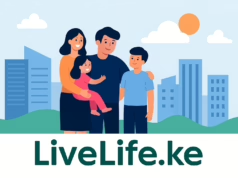A Financial Revolution, Around a Table
Discover table banking: a powerful, community-driven financial model transforming lives in Kenya. It’s more than money—it’s about empowerment, trust, and building futures from the ground up, especially for women.
97%
of members are women, making it a key driver of female economic empowerment.
1%
Interest rates can be as low as 1%, compared to over 12% at conventional banks.
300,000+
Groups are active across Kenya, holding over Ksh. 3 billion in savings.
How It Works: The Table Banking Cycle
Table banking follows a simple yet powerful cycle of saving, lending, and growing together. This process is built on transparency, collective ownership, and mutual support. Explore the key stages below.
Group Formation & Structure
Community members, often evolving from informal ‘merry-go-rounds,’ form a self-help group. They create a constitution outlining objectives, contribution amounts (as low as Ksh 25/week), loan rules, and leadership roles. This creates a foundation of shared ownership and clear governance.
Socio-Economic Impact
The effects of table banking ripple through families and communities, fostering financial inclusion, empowering women, and sparking small business growth. The data reveals a story of profound transformation.
A Movement Led by Women
Table banking is overwhelmingly a female-driven phenomenon, providing women with financial agency often denied by formal systems.
Fueling Entrepreneurship
Loans are not just for consumption; they are primarily used as capital to start or expand small businesses, creating a pathway to sustainable income.
From Survival to Asset Building
The journey of a table banking member often shows a clear progression. Initially, loans cover basic needs. Over time, as savings grow and business acumen develops, members take on larger projects, building lasting wealth for their families and communities.
🏠
Phase 1: Household Needs
Covering school fees, rent, and daily expenses.
📈
Phase 2: Small Business
Buying stock, starting a shop, or engaging in beadwork.
🐄
Phase 3: Asset Growth
Purchasing dairy animals, land, or building rental houses.
Challenges & Risks
Despite its success, table banking is not without its hurdles. Understanding these challenges is key to ensuring the long-term sustainability of these vital community groups.
The Persistent Issue of Loan Defaults
Loan defaults are the most significant threat to a group’s survival. While social pressure helps, it often can’t overcome deep-seated socio-economic vulnerabilities. Defaults are rarely due to a lack of will, but rather a genuine inability to pay.
- ✓ Low Income & High Household Demand: When daily expenses outpace income, loan repayment becomes impossible.
- ✓ Low Financial Literacy: A lack of understanding of concepts like interest can lead to poor borrowing decisions.
- ✓ Limited Borrowing Experience: New borrowers may struggle to manage debt effectively.
Operational & Governance Hurdles
Beyond defaults, groups face internal challenges that can erode trust and stability.
- ✗ Member Commitment: Members leaving the group or failing to make contributions can cripple cash flow.
- ✗ Mismanagement: In rare cases, poor fund management or theft can destroy a group’s foundation of trust.
- ✗ Lack of Capacity Building: Without training in financial management or market linkages, a group’s growth potential is limited.
Table Banking in the Big Picture
Table banking doesn’t exist in a vacuum. It interacts with, challenges, and complements formal financial institutions, creating a dynamic financial ecosystem in Kenya.
How Does It Compare?
| Characteristic | Table Banking | Conventional Banks | Microfinance (MFIs) |
|---|---|---|---|
| Collateral | Social Pressure & Group Guarantee | Required (Land, Assets) | Often Not Required (Group Lending) |
| Interest Rates | Very Low (e.g., 1-10%) | High (e.g., 12.39%+) | Variable, often higher than banks |
| Accessibility | Very High (Community-based) | Low (Requires formal history) | Moderate (Active outreach) |
| Key Strength | Trust & Community Support | Large Capital & Diverse Products | Reaching the Underserved |
| Key Weakness | Vulnerable to Systemic Poverty | Inaccessible & Rigid | Groups can “outgrow” its capacity |
A Bridge to Formal Finance
Table banking is increasingly seen as an entry point into the formal financial system. Many groups use Mpesa or hold bank accounts for security. Recognizing this, formal banks are now creating specialized products for these groups, acknowledging their immense collective power and creditworthiness. This creates a continuum of financial services, where a group can start small and, as it grows, access more sophisticated financial tools.





